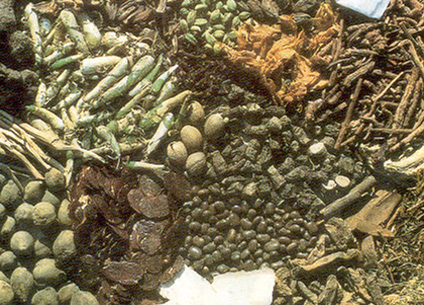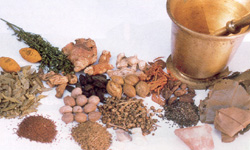 |
This ancient medical tradition, with its origins in the Mediterranean
world was brought to India with the spread of Islamic civilization. The system came
as a result of Muslim conquests in the region from around the 10th
century A.D. Thus, an originally transplanted medical system became indigenous
and traditional over the centuries, to the extent that today it is commonly
used. |
|
The Unani system of medicine was founded on the principles propounded
by Galen, a Greek practitioner. Kitab – al – shifa, the Magnum opus of
Abu Sina, an Arub Philosopher and physicist, also known as Avicenna in
English (A.D.980 – 1037), played a role of great importance in the
development of this system. In fact that today this style of medicine
is not known as Galenic, as it was earlier called, but the Unani
(Arabic name for Greek) system of medicine.
The essence of the Galenic system was the so – called
humoral pathology which, having originated in the Hippocratic school of Kos, came to be modified by Aristotle and by medical schools such as
Penumaticians. It was molded by Galen into a comprehensive and well –
thought – out theory, the main point of which was that food, after
being ingested was transformed by natural warmth in the stomach into
different substances. Part of these were useful to the body and after
a second transported by the blood to the different organs of the body,
while the waste was excreted. The main products of this process were
the four cardinal humours: blood, mucus, yellow bile and black bile.
These humours were combined with the four primary qualities: warmth
(or dampness), and dryness.If the four humours and the four primary qualities were all
in a state of mutual equilibrium, man was healthy. The influence of
exterior factors such as climate, age, profession, customs, etc caused
a dominance of one of the four humours to be observed in every human
body. This gave a man his “temperament”, which may be sanguine,
phlegmatic, choleric, or melancholic.
The magic word of this system was eukrasia, or more
comprehend sively symmetria (Arabic I’tidal). It was by conserving
symmetry in the different spheres of his life that a man protected his
health and it was by teaching his patients how to conserve or restore
it that physician made himself indispensable in the Galenic system.
The Galenic physician was meant not only to be a simple practitioner
busy with curing bodily diseases but an ethical instructor as well.
|
|
Another characteristic feature of the Galenic system was
the Aristotelian relation between the general and the particular. What
the medical textbooks contained were only the general facts of
anatomy, pathology, therapeutics, etc. From these general rules,
physicians had to derive the appropriate individual treatment for a
given case by means of logical procedure, especially by the so –
called analogical conclusion (analogismos). This was why in the Unani
system it was not possible to be a good physician without having
thoroughly learned the rules of logic. |
 |
|
|
Hospitals were built by both rulers and noblemen from the
beginning of the Muslim rule, but their endowment was looked on rather
as a matter of philanthropy than as part of a ruler’s administrative
duties. The development of hospitals was encouraged in India by a large number of Iranian doctors who migrated here in the reign of
Akabr. Through them the number of hospitals increased in his and in
succeeding reigns. Both (Ayurvedic) vaidyas and (Unani) hakims were
employed in these bimaristans (hospital’s), suggesting that there was
recognition on the part of the hakims of the merits of the other
system. The most important Muslim medical text produced in India,
Miyan Bhowa’s Madan – ul – shifa Sikandarshahi (The Mine of Medicine
of King Sikander), completed in A.D. 1512 and dedicated to the Sultan
of Delhi, Sikander Lodi, fully recognized that the Unani system in its
pure form did not suit local conditions, because the climate was
different and many Unain drugs were hardly obtainable in India. On
the other hand, Indian medicine knew of many drugs equally efficacious
but not recognized in the Unani system. The practitioners of the two
systems seem to have collaborated because each had much to learn from
the other and further improved their own respective systems this way.
Today, the Unani system of medicine is practiced in India. Thanks to the pioneering work and research of a charitable
organization Hamdard and various Tibbiya colleges located throughout
the country, this system of medicine is in no danger of going into
oblivion. |

